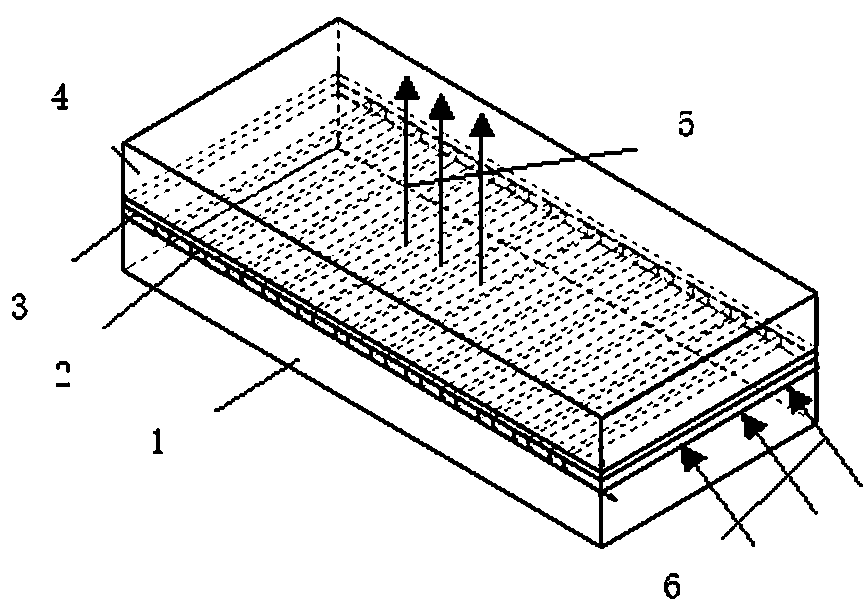A graphene array surface plasmon laser with real-time tunable emission wavelength
A graphene array, surface plasmon technology, applied in the field of optical communication, can solve the problem of loss of dynamic tuning
- Summary
- Abstract
- Description
- Claims
- Application Information
AI Technical Summary
Problems solved by technology
Method used
Image
Examples
Embodiment
[0022] refer to figure 1 , a graphene array surface plasmon laser with real-time tunable emission wavelength, including sequentially stacked SiO 2 The base layer 1, the graphene periodic strip array layer 2, the organic solvent layer 3 and the glass layer 4, the graphene periodic strip array layer 2 is provided with a fluid channel connected with the microfluidic device. The length and width of each layer are 800nm and 600nm, SiO 2 The base layer 1 has a thickness of 100nm, the graphene periodic strip array layer 2 has a thickness of 30nm, the strip graphene period has a thickness of 20nm, the organic solvent layer 3 has a thickness of 30nm, and the glass layer 3 has a thickness of 150nm.
[0023] The graphene periodic strip array layer 2 is deposited on SiO 2 on base layer 1.
[0024] The organic solvent layer 3 is a dimethyl sulfoxide IR-140-DMSO mixed solution layer, and the organic solvent layer is sandwiched between the graphene periodic strip array layer 2 and the g...
PUM
 Login to View More
Login to View More Abstract
Description
Claims
Application Information
 Login to View More
Login to View More - R&D Engineer
- R&D Manager
- IP Professional
- Industry Leading Data Capabilities
- Powerful AI technology
- Patent DNA Extraction
Browse by: Latest US Patents, China's latest patents, Technical Efficacy Thesaurus, Application Domain, Technology Topic, Popular Technical Reports.
© 2024 PatSnap. All rights reserved.Legal|Privacy policy|Modern Slavery Act Transparency Statement|Sitemap|About US| Contact US: help@patsnap.com








